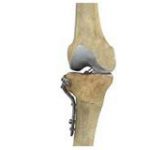

1. Joint Replacement (Total Knee Replacement):
Total knee replacement is considered when the knee joint is severely damaged or when conservative treatments have failed to provide adequate relief. It involves replacing the damaged joint surfaces with artificial implants made of metal and plastic. Total knee replacement is typically recommended for individuals with advanced osteoarthritis, rheumatoid arthritis, or significant knee trauma. The procedure can relieve pain, improve joint function, and enhance quality of life.
2. Unicondylar (Partial) Knee Replacement:
Unicondylar knee replacement, also known as partial knee replacement, is a surgical procedure that involves replacing only the damaged portion of the knee joint. It is considered when the damage is limited to one side (compartment) of the knee. This procedure is typically recommended for individuals with localized osteoarthritis or damage in a specific compartment of the knee. Unicondylar knee replacement may offer advantages such as smaller incisions, shorter recovery time, and more natural knee movement compared to total knee replacement. However, not all patients are suitable candidates for this procedure, and the decision should be made based on careful evaluation by a specialist.

3. Knee Arthroscopy:
Knee arthroscopy is a minimally invasive surgical procedure that uses a tiny camera (arthroscope) and small instruments inserted through small incisions to diagnose and treat various knee problems. It is often used to evaluate and repair soft tissue injuries, remove loose fragments or damaged cartilage, trim torn meniscus, or reconstruct ligaments. Knee arthroscopy is less invasive than joint replacement surgeries and typically involves shorter recovery time and less post-operative pain.
4. High Tibial Osteotomy:
High tibial osteotomy (HTO) is a surgical procedure performed to realign the bones of the knee joint. It is considered for individuals with early-stage osteoarthritis that primarily affects one side of the knee joint. HTO aims to relieve pain and delay the need for joint replacement by shifting the body weight from the damaged part of the knee to a healthier area. This procedure involves cutting and reshaping the tibia (shinbone) to correct the alignment. HTO is usually recommended for younger, active patients who have good knee stability and suitable alignment for the procedure.

It’s important to emphasize that the appropriateness of a specific knee surgery depends on individual factors such as the extent of joint damage, the location of the damage, the patient’s overall health, and their goals and expectations. Your healthcare provider will consider these factors and provide personalized advice based on your specific condition.





